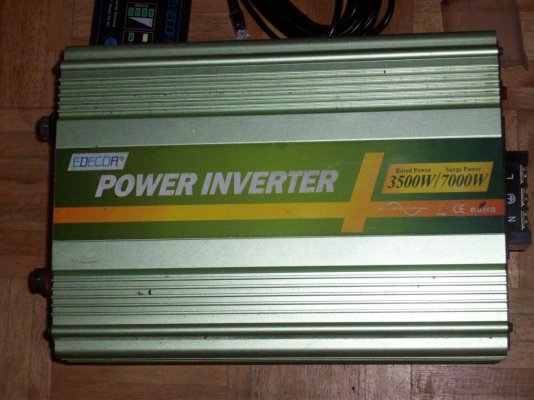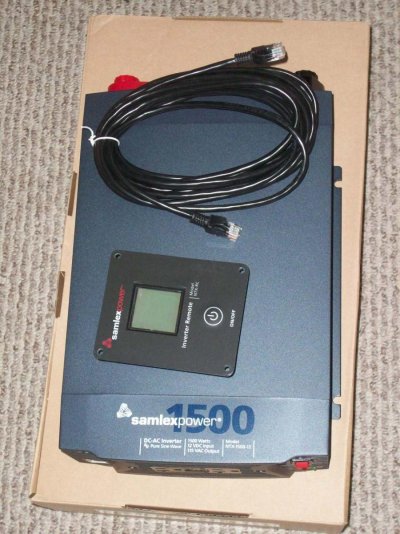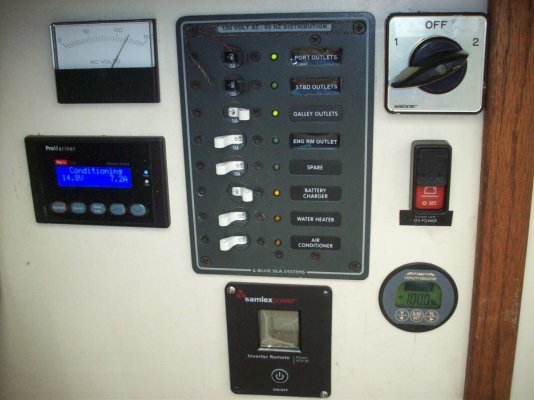boomerang
Guru
- Joined
- Apr 29, 2016
- Messages
- 1,446
- Location
- united states
- Vessel Name
- Wandering Star
- Vessel Make
- Hatteras 42 LRC
When we first bought our boat, I bought and installed an inverter to be able to operate the usual AC stuff while underway, since we don't have a generator. I, and my dubious wisdom, decided to save a few $$ and bought a 3500W off of ebay. It was advertised as a sinewave inverter and I paid in the neighborhood of $350 for it, remote included. Why in the hell I thought we would need 3500 watts since I never planned on having more than a 400ah house bank is beyond me. Why in the hell I believed it would actually be a sinewave as advertised was also another lapse in my judgement. It works fine but when we run our digital microwave on it, I don't need an oscilloscope to know that it's outputting current that's just as square as sponge bob's pants.
This new Samlex is only 1500 watts but it's all that we need and it's way quieter. I boiled a cup of water in the microwave to test it and the microwave performed just as it does on shore power...smooth and quiet.
The good thing is the wiring was already there so it was a relatively painless swap.
The other thing I did was add a 15A shore power receptacle that is designated for the portable generator we have. Our 30A shore power goes through a transformer and that was just one more thing to load the generator and rob wattage that could be used elsewhere. I am very hopeful that we'll be able to run the reverse cycle heat/AC with the generator after I add a start capacitor to the AC. I have it but haven't gotten around to installing it, since I need to remove the refrigerator to get access to the unit. I did try the AC on the gen while it was going through the transformer and it was definitely a no-go. Hopefully bypassing the transformer and adding a capacitor will allow it to start. It only takes a few amps to run ,once it's going.
This new Samlex is only 1500 watts but it's all that we need and it's way quieter. I boiled a cup of water in the microwave to test it and the microwave performed just as it does on shore power...smooth and quiet.
The good thing is the wiring was already there so it was a relatively painless swap.
The other thing I did was add a 15A shore power receptacle that is designated for the portable generator we have. Our 30A shore power goes through a transformer and that was just one more thing to load the generator and rob wattage that could be used elsewhere. I am very hopeful that we'll be able to run the reverse cycle heat/AC with the generator after I add a start capacitor to the AC. I have it but haven't gotten around to installing it, since I need to remove the refrigerator to get access to the unit. I did try the AC on the gen while it was going through the transformer and it was definitely a no-go. Hopefully bypassing the transformer and adding a capacitor will allow it to start. It only takes a few amps to run ,once it's going.





